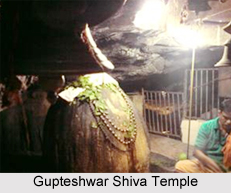 History of Koraput defines the rule of Solar Dynasty, Eastern Ganges dynasty and the tribal rule in early era. Koraput faces the historical forts, temples and the caves from the early Vedic era and the medieval era. This city was further developed under the rule of British East India Company in India.
History of Koraput defines the rule of Solar Dynasty, Eastern Ganges dynasty and the tribal rule in early era. Koraput faces the historical forts, temples and the caves from the early Vedic era and the medieval era. This city was further developed under the rule of British East India Company in India.
Early History of Koraput
Koraput derives its name from its headquarters the present town of Koraput. In ancient times when the Nala Dynasty was ruling over this tract, Pushkari near modern Umarkot was the capital city. Before the Solar Dynasty, the tribal rules the entire area of Koraput.
Medieval History of Koraput
In the medieval period, Nandapur developed as the capital under the Silavamsi kings and sometimes under the kings of the Solar dynasty. Vikram Dev of the Solar dynasty shifted his headquarters to Jeypore about the middle of the 17th century and this town prospered as the capital.
Modern History of Karaput
Koraput was chosen by the British East India Company and later British Empire in India in 1870 for better health prospects. The origin of the name of Koraput is obscure. There are several theories, none of which are convincing.
Derivation of the Name
The name Koraput comes from "Kora-Putti" or “the hamlet of the nux-vomica†and it is derived presumably from a tree or trees that must at one time have been prominent near the site. But today not a single tree of nux-vomica is to be found near about the town of Koraput. Koraput is corrupted form of "Karaka pentho". Karaka literally means "hail-stone". It is also believed that one "Khora Naiko" laid foundation of the village during the time of Nandapur kings. He hailed probably from Ranpur and served under the Nandapur kings in the Militia, and for his faithful and meritorious services he has permitted to establish this village which was named after him as Khora Putu, and later on the name has been abbreviated to "Koraput". Koraput is surrounded by mountains, thick forests and waterfalls.
Related Articles
Odisha
Temples of Odisha
Districts of Odisha
Puri, Odisha
Forts in Odisha
Crafts of Odisha
Beaches of Odisha
Cities of Orissa



















